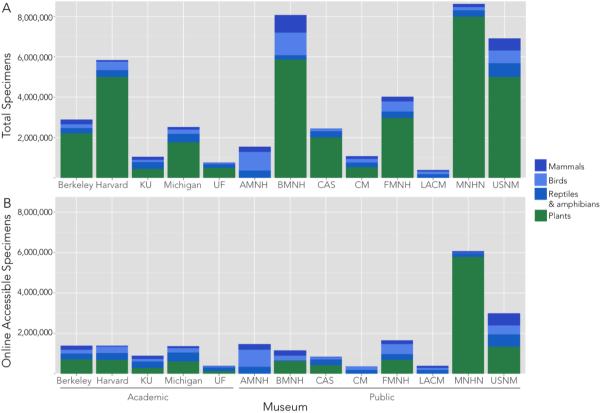Figure 3.
Overview of available specimens in terrestrial vertebrate and herbaria collections in thirteen of the world's most diverse and well-known academic and public collections. (A) Total number of specimens in several major taxonomic groups. (B) Number of specimens that are digitally databased and available online. Numbers were acquired from museum websites, online databases, and/or from curators and are estimates,as collections and digitization efforts are constantly growing. Estimates for many herbaria include plants and fungi; we have not distinguished between these taxa here. This figure includes only non-lot-based taxonomic groups, which are easier to precisely quantify in a standardized manner. Abbreviations: Berkeley:Berkeley Natural History Museums, Berkeley; Harvard: Harvard University Herbaria and Museum of Comparative Zoology, Cambridge; KU: University of Kansas Biodiversity Institute, Lawrence; Michigan: University of Michigan Herbarium and Museum of Zoology, Ann Arbor; UF: Florida Museum of Natural History, Gainesville; AMNH: American Museum of Natural History, New York; BMNH: Natural History Museum, London; CAS: California Academy of Sciences, San Francisco; CM: Carnegie Museum, Pittsburgh; FMNH: Field Museum of Natural History, Chicago; LACM: Natural History Museum of Los Angeles County, Los Angeles; MNHN Muséum National d'Histoire Naturelle, Paris; USNM: National Museum of Natural History, Smithsonian Institution, Washington, D.C.

